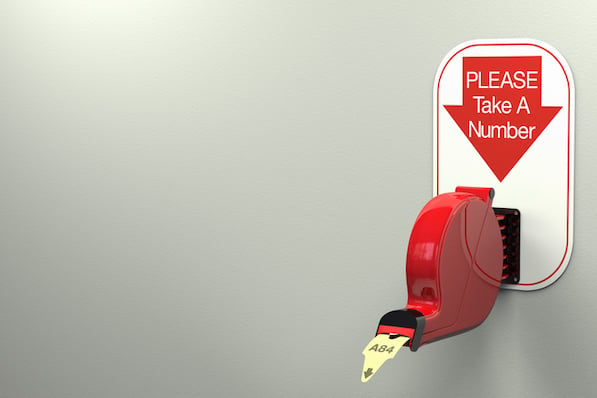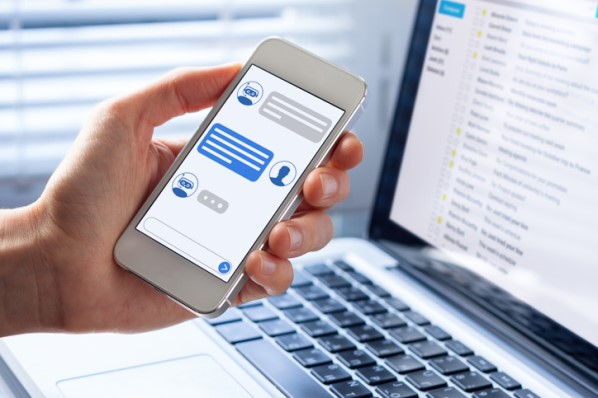Why is it that when we call the customer support line to complain and vent, we always feel we're in the right -- but when roles are reversed and we're the ones answering an irate customer, we're in the right then, too?


It doesn't matter what industry you're in -- dealing with angry customers is a standard part of the job. But listening to an angry customer -- whether they're in the right or you are -- doesn't mean the customer service you provide has to suffer. The goal of this article is to teach you how to defuse an angry customer and turn them into a satisfied one using four simple steps -- steps that can be unnoticed and are often underestimated because of how easy they are to apply.
→ Download Now: How to Be a Great Customer Support Rep
Let's take a look at some of the typical responses a customer might receive when frustrated with the service they've received -- whether it's the product or service itself, a pricing issue, or a technical difficulty:
- "I understand your frustration." It might seem innocuous, but here's what's wrong with the "I understand" response: Just because you understand something does not mean you agree with it. Understanding someone can give you perspective, but it won't necessarily change your mind or have you agree with the situation. This phrase can set already-angry customers up for even more anger -- because they'll feel like you're saying it for the wrong reasons.
- "But … " When you hear someone's response followed by a "but," what words do you think will follow, good or bad? Usually, the word "but" alludes to negative news that seems to "burst the bubble," and makes the customer angrier before they even hear the full response.
Now, let's dive into the four strategies to calm your angry customer down:
4 Key Steps to Defusing an Angry Customer
1. Listen
Imagine your phone rings, you pick it up and a customer of yours is furious, complaining about an experience he had with your product or service. Your immediate reaction may be to go into defense mode and try to stop the complaining in its tracks. But the more you attempt to cease complaints, the more irritated the customer becomes. What do you do? Just listen. Actually give your customer the undivided attention they need -- to vent, to rant, or to provide feedback.
By allowing the customer to vent, they now feel like you care (which you do), and you can then understand the entire situation without assuming anything prematurely.
Think about the last time you had to get something off your chest and needed someone to listen. Would you have been more upset if they interrupted or were not actually paying attention? Listening to customers actually helps reduce churn and increase retention, according to a survey by HundredX and YouGov. The survey also showed that 88% of C-level executives believe this to be true.
The next time a customer wants to vent or complain, let them until they're finished -- even if it's hard to hear.
2. Apologize
An apology goes a long way, especially if you've given your customer the time and patience needed to speak their mind. After all is said and done, an "I'm terribly sorry … " will show some empathy and humility. But don't just apologize because that's what the obvious response should be -- "I apologize for your inconvenience" is a cookie-cutter, templated response that makes me cringe when I hear it. It lacks empathy and understanding, it's robotic and the customer will sense that -- which will usually be followed by "well, you should be sorry!"
Apologizing the correct way (using empathy and patience) is a skill that everyone in your company should learn how to do. Saying that you're sorry without meaning it can have negative consequences -- and customers will associate that lack of authenticity in your apology to the entire company, which will cause them to churn. According to The Carey School of Business in Arizona, satisfaction for over 30% of upset customers increased to 74% when they were offered something in return for their inconvenience.
By empowering team members to go the extra mile to apologize -- and mean it -- by offering to set up something for them, discount their next purchase, or quickly resolve the problem for them.
3. Solve
This part is crucial, because if you simply spend 30-60 minutes on the phone listening and apologizing, but not problem-solving, then you've truly wasted the customer's time -- as well as your own. Solving a problem does not necessarily mean having a solution in place right away, but can also mean offering a strategy to a solution. If a customer feels they were charged too much, for example, then solving the problem could sound like this:
"I want to make sure what you're paying is what we agreed to. My priority right now is to make sure we get this fixed for you right away, so what I'm going to do is … " You don't have to give them the answer right away because that can actually cost you money. What if you gave your customer a refund without looking into the situation? Defuse the angry customer first, then do your due diligence to make sure it's actually a problem you can solve.
It doesn't matter what business you're in -- solving problems for your customers can help your churn rate. In another study by The Carey School of Business, 81% of customers wanted the problem to be solved, but only 31% received it -- which was a huge contributor to customer rage.
In some cases, your customer support team may not have the authority or the ability to actually solve a particular problem. A problem a customer can experience could stem from the sales team, a bug in the software that only your development team can solve, or a glitch in marketing which caused a "spammed stampede of emails" to be sent to their inbox.
So, how can you increase your retention and customer satisfaction beyond just solving their problem? Simple -- by explaining to them why it happened, and by explaining what you're doing to help -- even if you can't actually solve the problem yourself. Share a transparent timeline with them for what they can expect, and when, in terms of a resolution.
4. Thank
After agreeing on steps to move forward and resolve the problem, thank the customer for calling you and bringing it to your attention. Why? When someone says thank you, it shows their appreciation. When thanking a customer for complaining and yelling, it makes them realize that you really care and you value their opinion.
That's it, these are the four steps in calming a customer down. To help tie in these four strategies into a response, here's what listening, apologizing, solving, and thanking should sound like in practice:
"Sally, I'm so sorry you received bad service the last time you called, and that you had to take time out of your busy day to deal with this annoyance. I too would be upset, so I'm glad you called me. I want to get this resolved for you as soon as possible and I'm making this priority.
After we hang up the phone, this is what I'm going to do: I'm going to speak to our team member you originally spoke to and figure out what went wrong, and why they responded the way they did. I'm going to do a case study on this so this never happens again. I want to get the most accurate information, so let me give you a call back in the next 24 hours to update you. What's the best number to reach you on? I'm also going to send you a calendar event for our call, as I want to make sure I give you the time without being interrupted. Thanks for bringing this to my attention."
If you don't provide authentic customer service by using this L.A.S.T. method, you could suffer the effects to your business. Instead of positive reviews, your business will suffer from negative reviews -- which make up your online reputation. In 2017, BrightLocal did a survey and found that 85% of consumers trust online reviews as much as recommendations from people they know. Practice L.A.S.T. anytime you're in a situation with a customer where they're feeling frustrated, and you'll be rewarded with calmer phone calls, positive reviews, and greater customer loyalty.
Customer Service Skills

![[Cypress] 33 Customer Service Tips HubSpot Reps Swear By](https://2406023.fs1.hubspotusercontent-na1.net/hubfs/2406023/Generated%20images/Family%20of%20garden%20gnomes.jpeg)
-Sep-09-2022-01-46-33-68-AM-1.png)


![[New Research] The State of Customer Service in 2019](https://2406023.fs1.hubspotusercontent-na1.net/hubfs/2406023/Imported_Blog_Media/Screen%20Shot%202019-06-04%20at%207_07_52%20AM-3.png)


